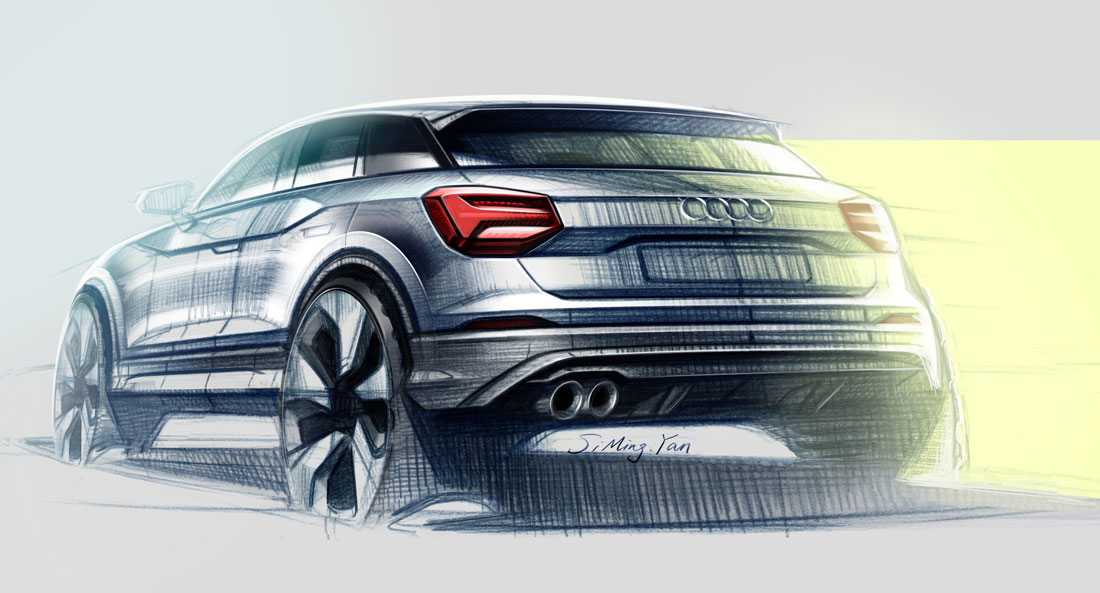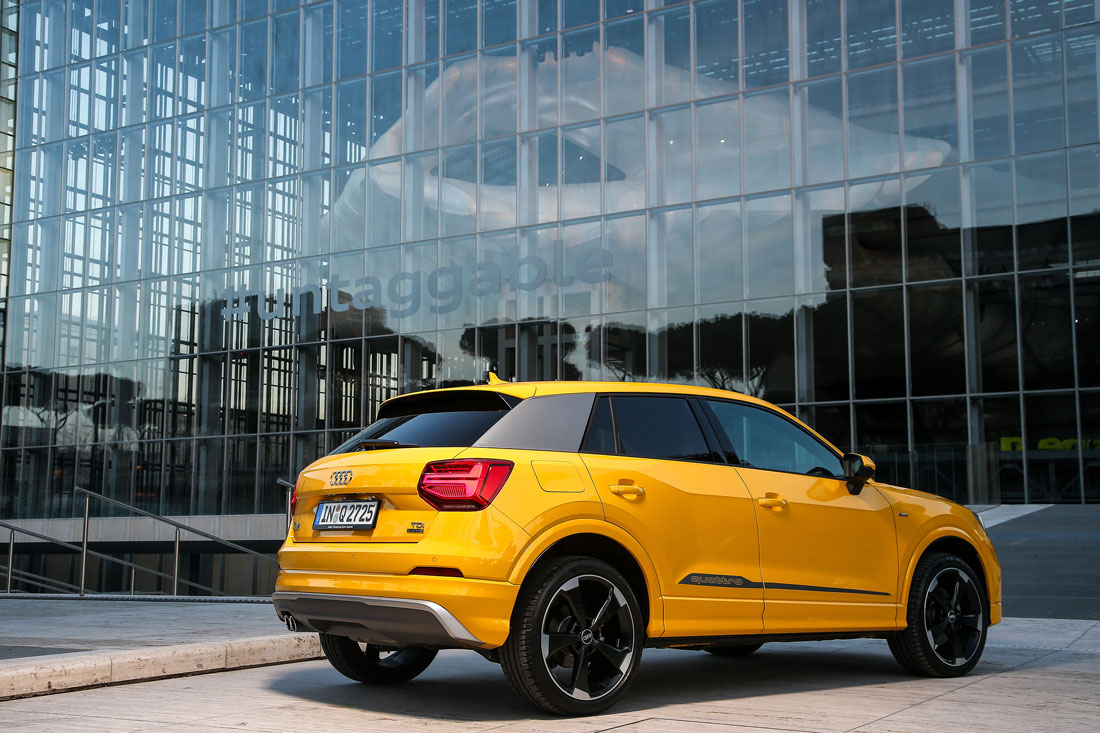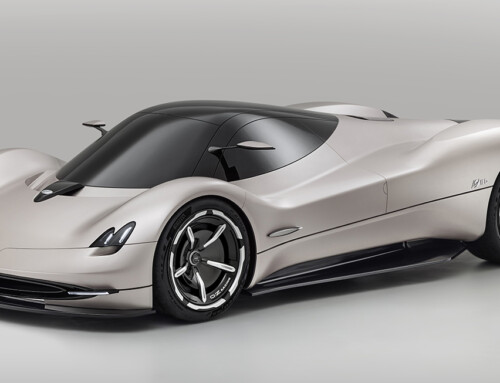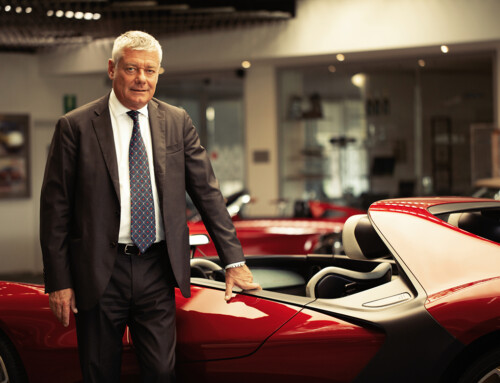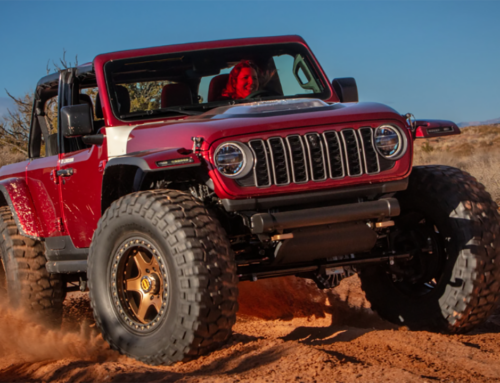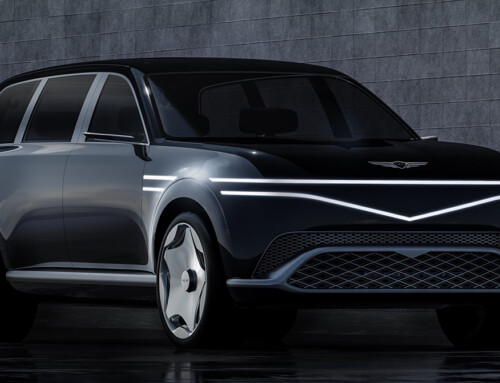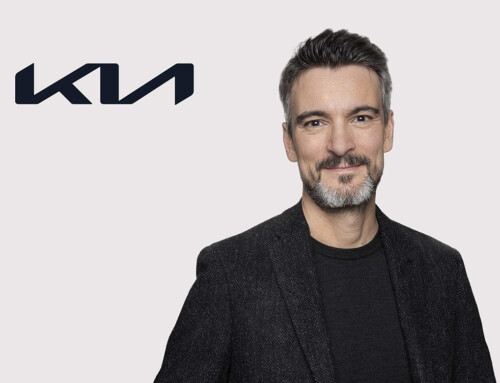It’s the smallest of Audi’s SUVs. Developed on the MQB platform (the same platform also underpinning – among many other Volkswagen group models – the A3), the Q2 measures just 4.19 metres in length, 1.79 in width and 1.51 in height. These compact dimensions are the result of intense efforts by the designers and contribute in no small measure to giving meaning back to the ‘S’ in ‘SUV’, which stands for Sport. “It’s a new kind of car” explains Audi design director Marc Lichte. “The lower part is typically SUV, while the cabin is that of a coupé. And this is also reflected in the interior, developed under the guidance of Enzo Rothfuss: the driver position is raised, as it should be in an SUV, but it is also sporty and lower in relation to the steering wheel. The dashboard, with the instruments contained in a 12.3” screen, is very narrow. Completing the picture is the driving style offered by the Q2, which is also very sporty. It’s a functional car, but it’s also lots of fun.”
Ingolstadt wanted the Q2 to convey an image of power and energy. Exterior design director Matthias Fink explains how he achieved the SUV look with the large octagonal grille which, with the bottom two corners cut away, “makes the car look taller, like our other Q models”. But he also describes the car as “geometrical and vivacious, and the product of a unique new design language”. All of this is in keeping with the new philosophy defined by Lichte, according to which the three different Audi families – R, Q and A – “have to have three different faces, and in fact, every model will have to have its own personality in future”, meaning that the Q3, when it arrives, will be very different from the Q2 and the Q5, “even in its proportions”.
Two large, framed air intakes contribute to the SUV appearance together with the grille, while the low roofline, which drops to blend into the C pillar, accentuates the sports character of the car, as does the tail spoiler. As well as geometric angles and polygons, other distinctive features in the side view include a differently coloured C pillar, sharp-cornered rear windows and concave surfacing in the flanks, which accentuates the wheels and certain typical qualities of Quattro models. At the rear, as well as the spoiler and diffuser, the strong curvature of the bumper also contributes to creating a dynamic effect. “It’s like a sculpture – says Fink – once the volumes and architecture were defined, we took a knife and cut here and there, creating a three dimensional form of undoubted effect.”
Lichte explains how when he arrived at Audi in February 2014, the proportions of the car had already been defined by Wolfgang Egger’s team. “My work was limited to modifying a few angles and, mostly, redesigning the front in keeping with our new design strategy. The Q2 had to be an SUV, and therefore with certain powerful characteristics, but it also had to have pure and simple surfaces and graphics with a very light touch.”
A great deal of effort was focused on the design of the LED headlamp and taillight units, which have a distinct three-dimensional effect. The car has a narrow waist between the front and rear fenders, explains Lichte: “The cabin seems tucked between the wheels, a little like the head of an American football player squeezed between the shoulder guards.”



